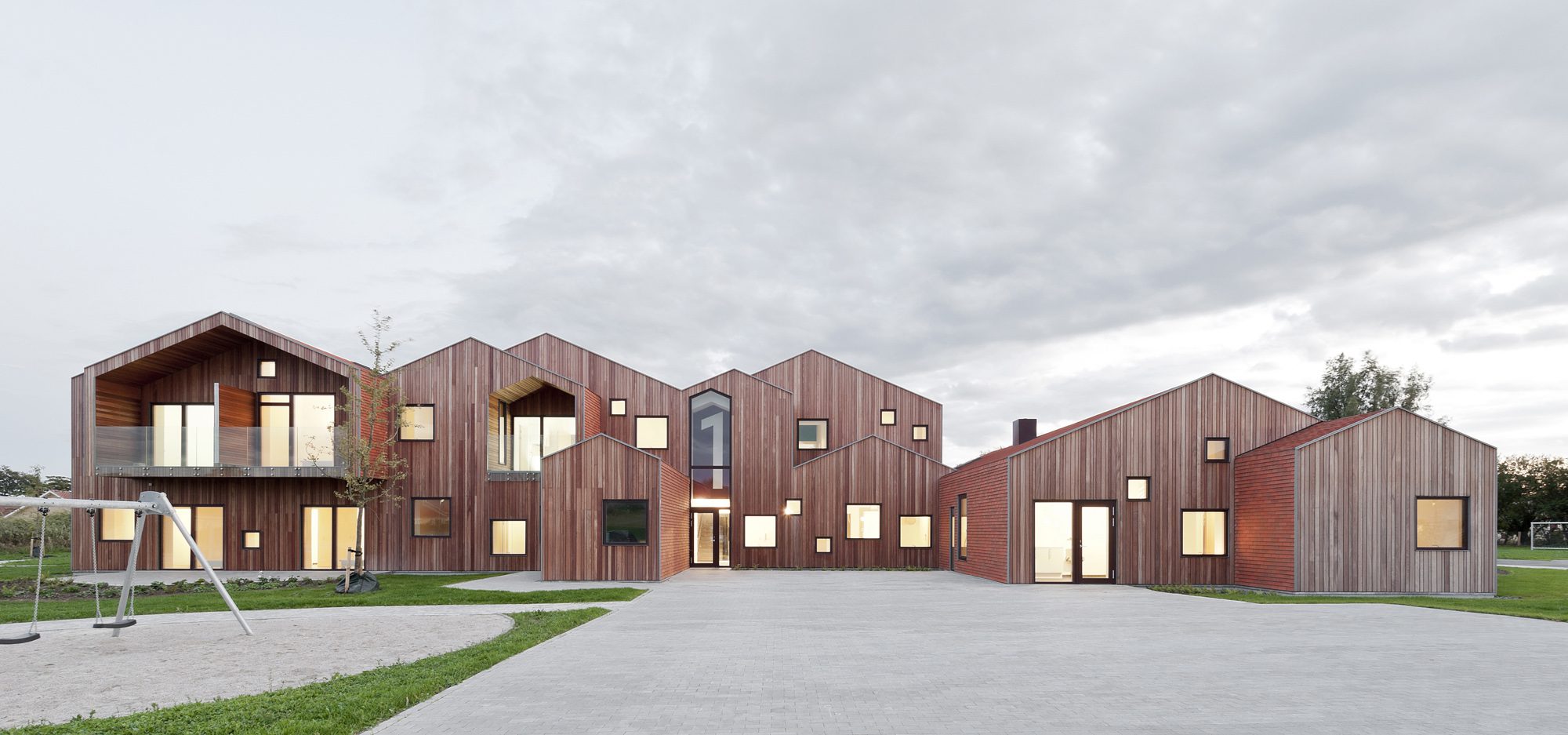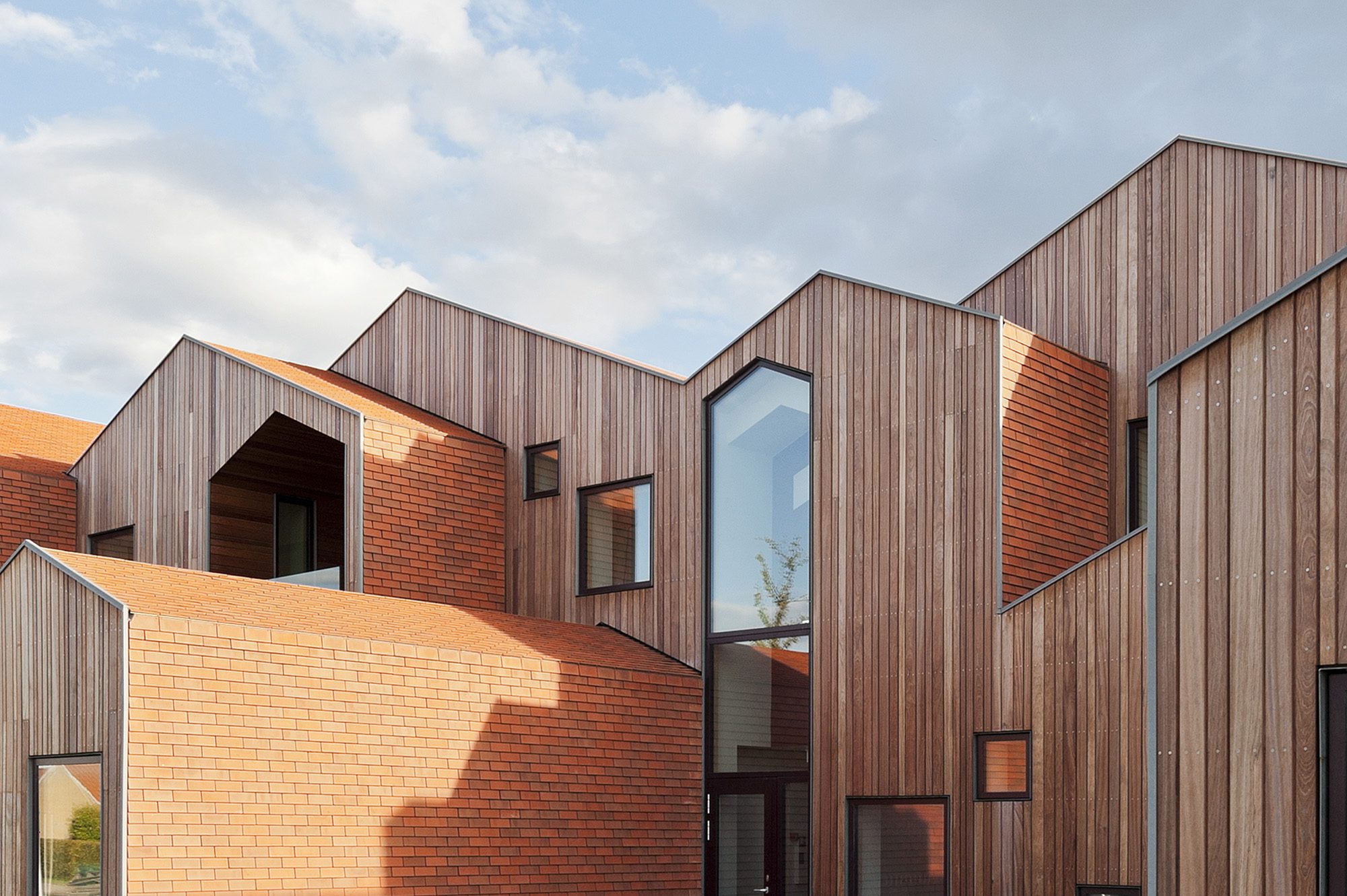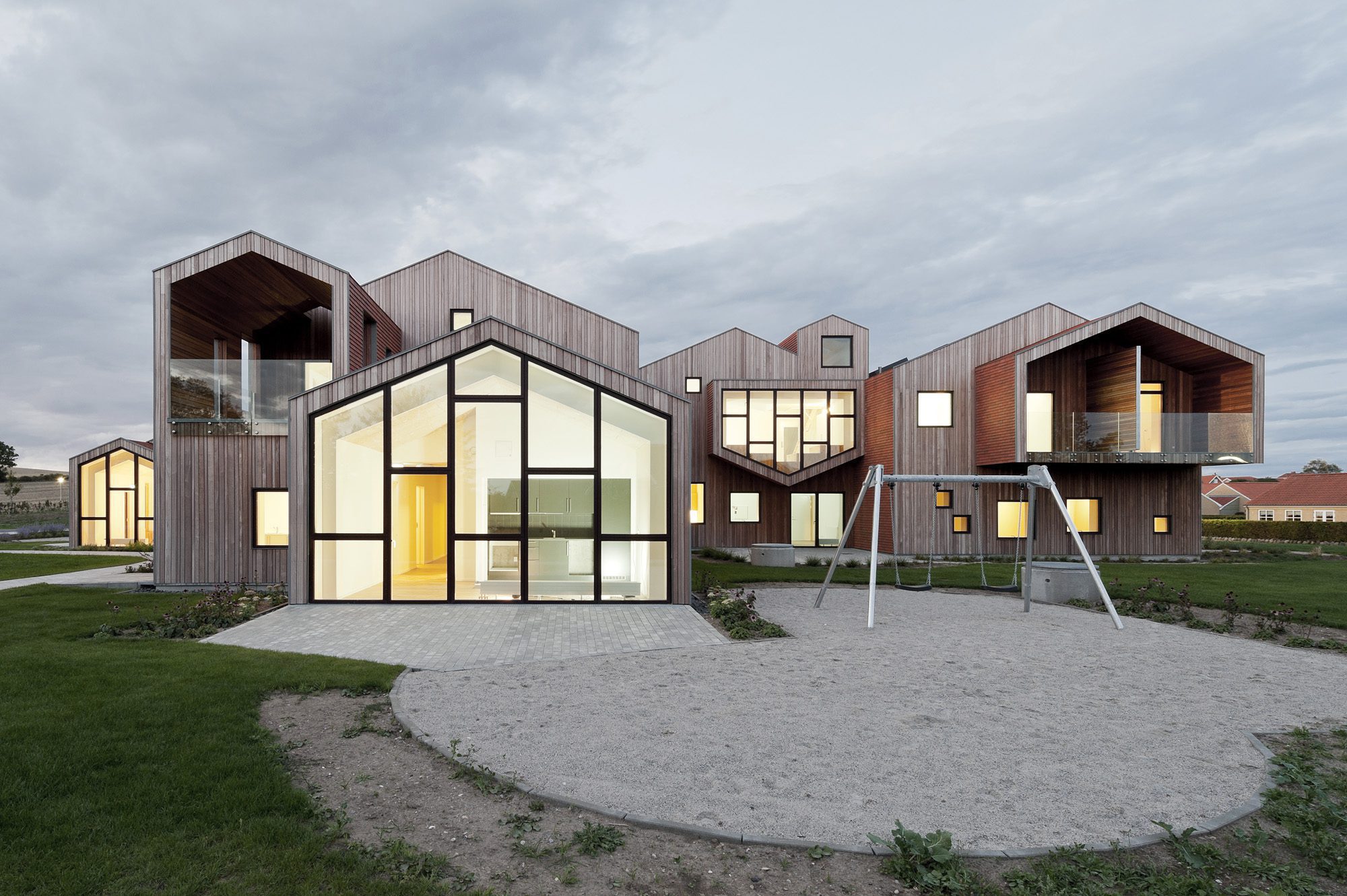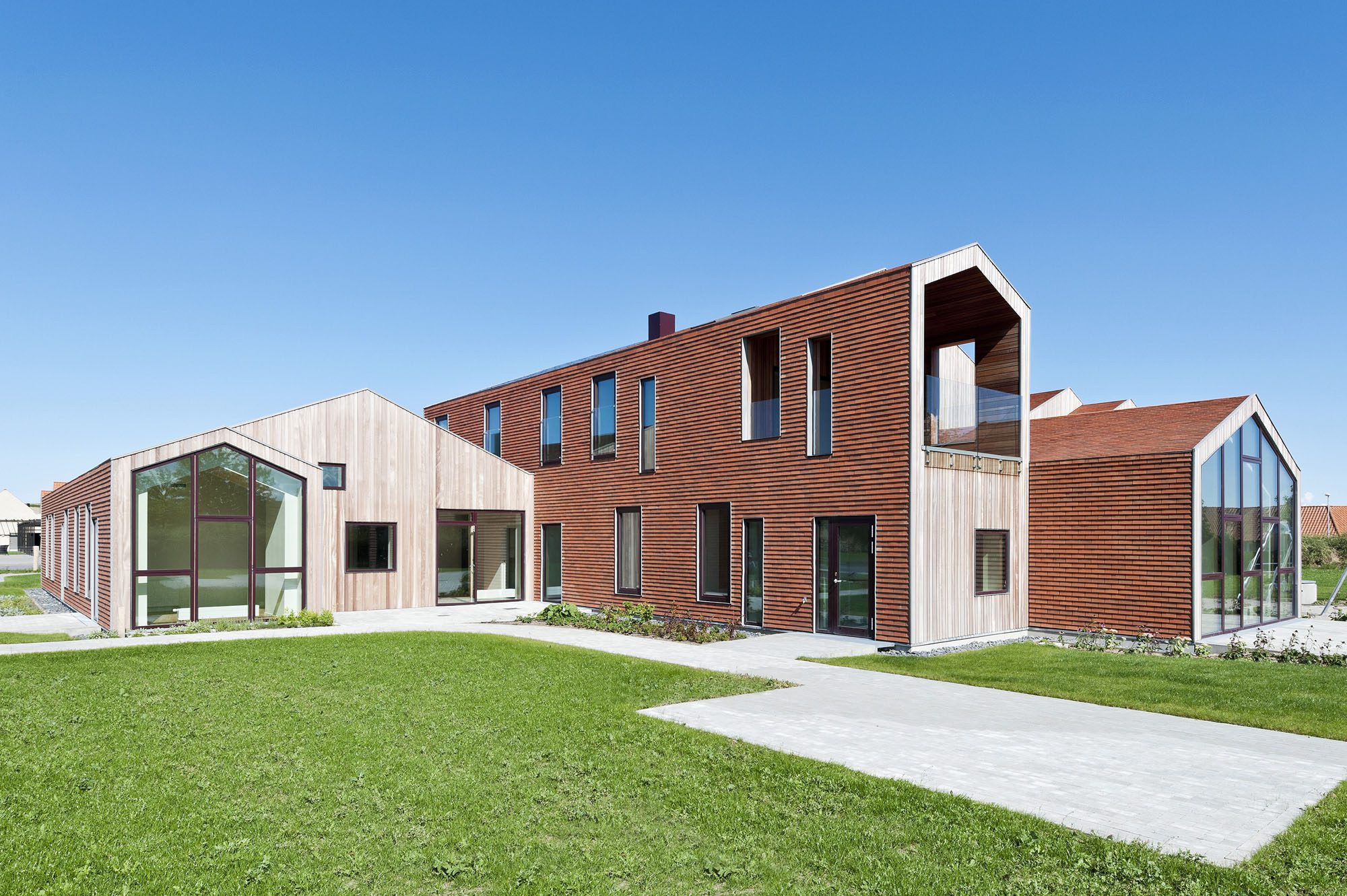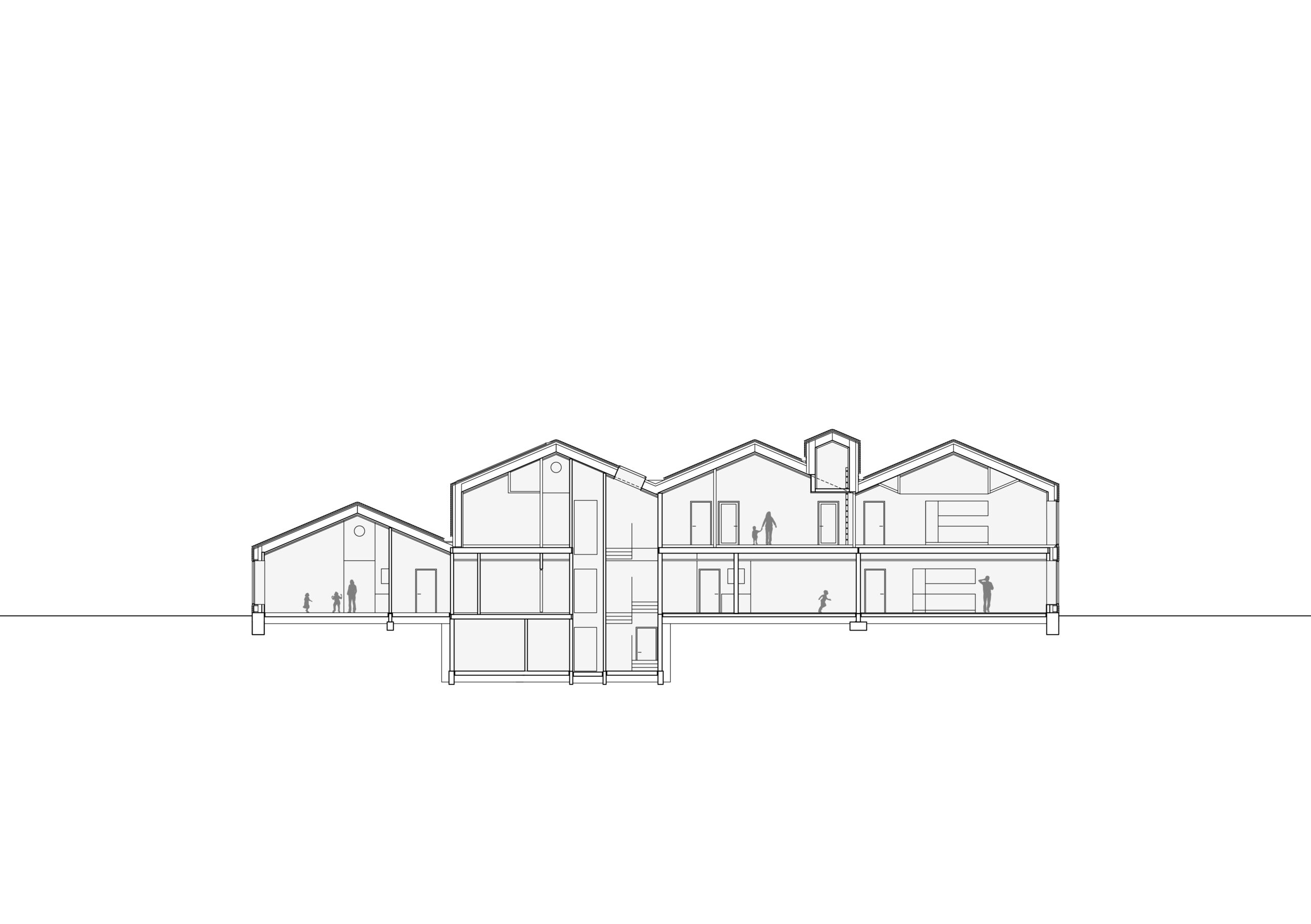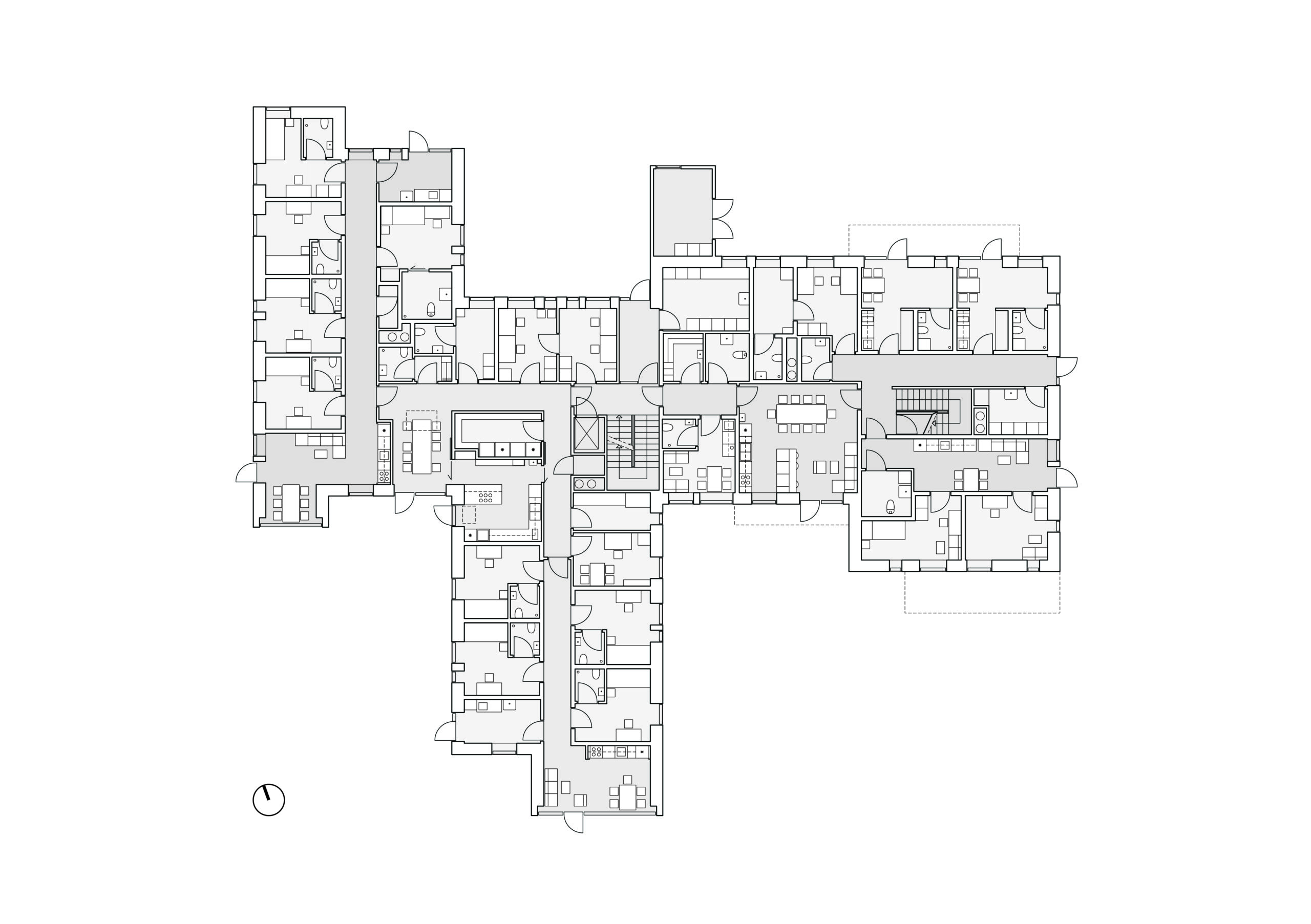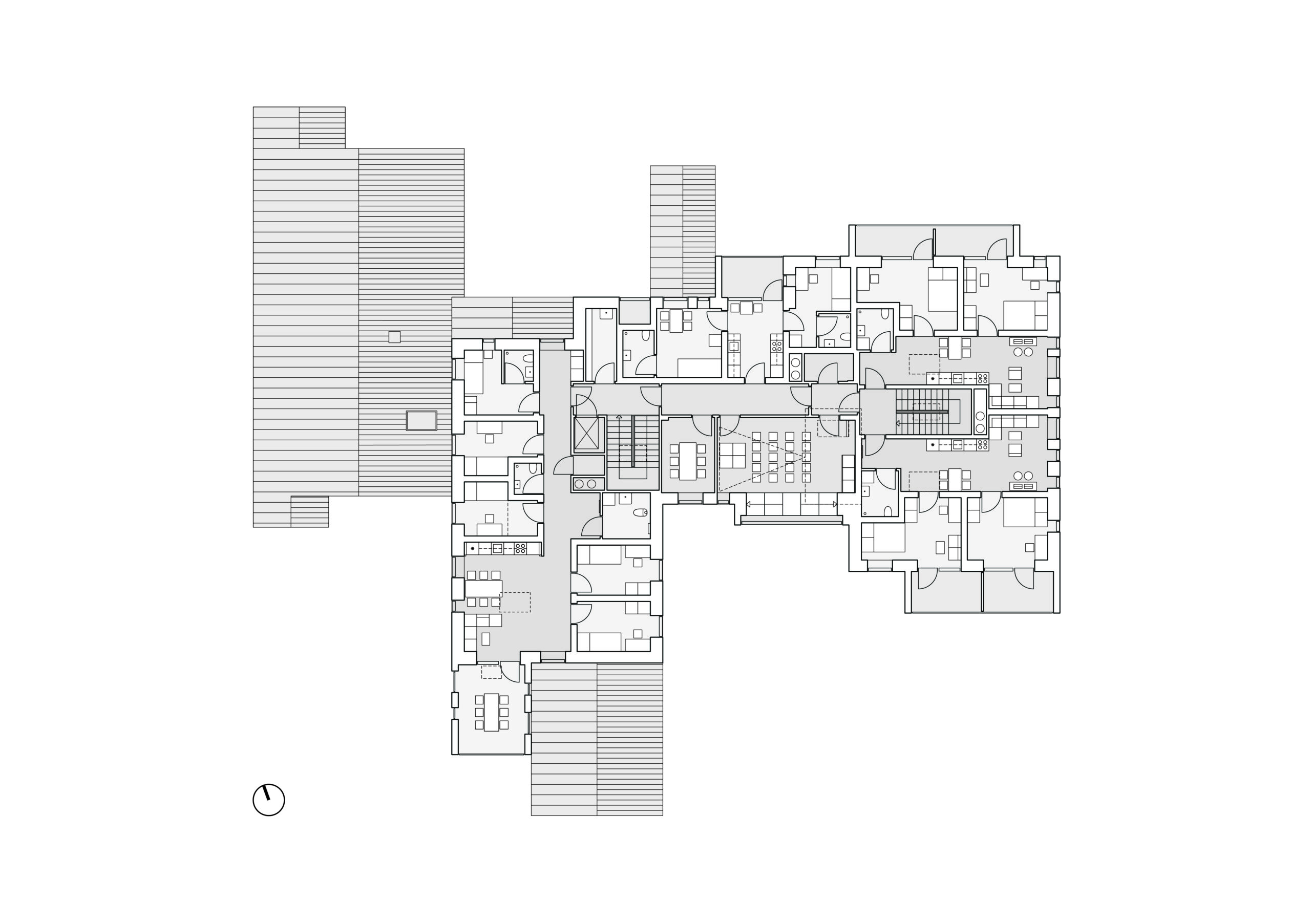Children’s Home of the Future/
Cebra Architecture
Project Details

Location(City/Country):
Kerteminde / Denmark
Tipology:
Healthcare
Year (Design/Construction):
- / 2014
Area (Net/Gross):
- / 1250 m2
Operational Carbon emissions (B6) kgCO2e/m2/y:
-
Embodied Carbon emissions (A1-A3) kgCO2e/m2:
-- The project made use of timber as main construction material, that is renewable, recyclable and stores carbon during its growth, reducing the environmental impact and carbon emissions of the building.
- The building is well integrated with the surrounding landscape, minimizing its footprint.
Project description as provided by the Architects:
Danish architecture studio CEBRA has completed a pioneering project for a new type of 24-hour care centre for marginalized children and teenagers in Kerteminde, Denmark. The tile and wood cladded building plays with familiar elements and shapes to create a homely environment in a modern building that focuses on the residents’ special needs. The Children’s Home of the Future combines the traditional home’s safe environment with new pedagogical ideas and conceptions of what a modern children’s home is and which needs it should fulfil.
The vision for the new institution is to establish a care centre that encourages social relations and a sense of community while at the same time accommodating the children’s individual needs – a place that they are proud to call their home and prepares them for their future path in life in the best possible way. The physical surroundings reflect a practice-oriented pedagogic approach so that the architecture actively supports the staff’s daily work with children, who struggle with behavioral, social and mental health problems.
A place like home
Whether you look at children’s drawings or a web browser’s stylised icon, at all ages we recognise and use the rectangular pitched-roof building with a chimney as a sign for “home”. It is the visual essence of the functions it contains – both literally and symbolically. The design for the new children’s home takes the familiar basic shapes of the typical Danish home as its natural starting point: the classic pitched-roof house and the dormer motif. The two elements are used in their most simplified form to create a recognisable exterior appearance and integrate the building into the surrounding residential area. They make up the project’s underlying architectural DNA, which expresses inclusion, diversity and an atmosphere of safety.
By combining and applying the basic elements in a new and playful way the care centre is highlighted as an extraordinary place with its own identity. The basic geometric shape is modified by the distinctive dormer profiles, which grow into and out of the building volume, are turned upside down and even rise up to form a view point. The concept adds spatial variation and functional flexibility to the interior organization. The dormers give the residents the opportunity to set their own mark on the building by involving them in the arrangement, décor and use of these “bonus spaces” according to varying needs and changing activities. The varying sizes and orientations allow for a wide range of applications such as reading and movie corners, a study for homework, areas for painting and crafting, common rooms for festive events etc.
More home, less institution
The overall organization consists of four interconnected houses. The elongated wings of the traditional institutional building are split up and contracted to form a compact building with offset volumes. Thereby, the building scale is reduced and self-contained, varied units are created for the different groups of residents. Each age group has its own house in connection with a central unit for flexible use. The layout aims at providing the residents with a sense of belonging to their unit – a homely base where they can retreat alone or in smaller groups.
The smaller children’s units are retracted from the street and oriented towards the garden with direct access to the playground. The central unit contains the main entrance in connection with the parking lot, which gives the staff an overview of arriving visitors and deliveries without affecting the housing units. The teenagers’ unit is the most extrovert section of the building and is oriented towards the street. The older residents are encouraged to use the city and engage in social activities on equal terms with their peers.
Typical institutional functions such as administration, staff rooms and storage are mostly located in the basement and on the 1st floor so that they get “lifted” out of the resident’s everyday life and minimise the feeling of being in an institution. The building’s rational organization ensures short distances and proximity between the different units so that the personnel always are close to every resident. Thus, the personnel’s working procedures are incorporated effectively in the daily routines, thereby freeing more time for taking care of and spending time with the children – more home, less institution.
Facades
The primary aim of the project’s design is to express inclusion, diversity and an atmosphere of safety. The design stands out as a place of significance, which the residents are proud to call their home, while at the same time providing the safe environment of a traditional home that architecturally relates to the surrounding residential area of single family houses. The design is also a reference to local building tradition. The pitched roof house is the archetypical shape of the Danish single family house. This is reinforced by the use of domestic building materials, including clay tiles that resemble both traditional roof tiles and brickwork as well as vertical lengths of wood reminiscent of conventional weatherboarding. The application of traditional and well-known materials in new ways contributes to create a modern building with a strong identity that at the same time is rooted in the local context and building tradition.
The main challenge of the façade design was to find the right sort of tile that was sturdy enough for both the roof and facades, which are in close proximity to the playground and children’s ball games etc. The solution for meeting these requirements was to use custom made tiles specifically manufactured for the project. In order to create the seamless transition between roof and façade the tiles are mounted on rafters with a slight overlap on top of an EPDM cloth for weather protection

